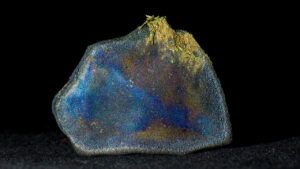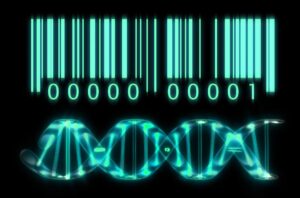President John Adams once said: “Facts are stubborn things; and whatever may be our wishes, our inclinations, or the dictates of our passions, they cannot alter the state of facts and evidence.” Apparently, evolutionists didn’t get this memo. Even though our fossil record is profoundly more significant than it was 160 years ago when Darwin penned his infamous tome, the record still does not support the theory of evolution.
In Chapter 10 of The Origin of The Species, on the issue of the geological record, Darwin wrote: “Why then is not every geological formation and every stratum full of such intermediate links? Geology assuredly does not reveal any such finely-graduated organic chain; and this, perhaps, is the most obvious and serious objection which can be urged against the theory.” Darwin went on to speculate that the problem was due to the imperfection of the geologic record. There simply was not a great number of fossils that had been recovered in Darwin’s time. He believed that with future exploration, many fossil series would be found to support the theory of evolution.
We are still waiting.A fossil series is a sequence of fossils, presumably over vast periods, which allegedly show the progression of an animal due to evolution. Evolutionists claim that are hundreds of these so-called fossil series that support evolution. But here’s the problem, that’s just not true.
One such example is the Pliocene snail shell fossils found in freshwater deposits in what once was Yugoslavia. The shells were supposedly deposited starting 10 million years ago over a period estimated to be 7 million years. At the beginning of the series, the organism was a snail; at the end of the seven million years of purported evolution, the organism was… a snail.
Another example is Pelycodus, a tree-dwelling primate. It’s claimed that over 5 million years of evolution, Pelycodus evolved into Smilodectes, which is, you guessed it, a tree-dwelling primate. You see, what they are documenting is adaptation and divergence, a process well known to happen, but which is not evolution. Adaptation is the opposite of evolution. Information, already present in the genome, is favored by environmental conditions causing the organism to adapt to its environment. A marvelous ability ingeniously designed into the animal by its creator. Evolution would require that new information be introduced into the genome to create a unique animal with additional features and abilities. This type of evolution forms the basis of the evolutionary worldview and has never been observed in science.
Famed paleontologist, evolutionary biologist, and Harvard University professor Stephen Gould (and certainly not a Creationist) discerned that the fossil record demonstrates two things, sudden appearance, and stasis. He observed that animals appear suddenly in the fossil record, fully formed. He also noted that organisms remain essentially the same over time; that’s stasis. Sudden appearance and stasis is seen in fossils of trilobites, lobsters, horseshoe crabs, and many others. Sudden appearance and stasis are what we would expect to see if we have a Biblical worldview and believe that God designed and created everything. However, it is precisely the opposite of what evolutionists, like Charles Darwin, would expect. Darwin said: If numerous species, belonging to the same genera or families, have really started into life all at once, the fact would be fatal to the theory to descent with slow modification through natural selection.” But 160 years later, sudden appearance and stasis are exactly what we have found in the fossil record.
Author Mark Twain said: “Get your facts first, and then you can distort them as much as you please.” That’s what evolutionists are doing. But facts are stubborn things, and the facts support the Biblical account of creation. Creation happened, believe it!



